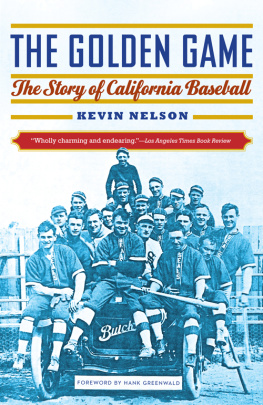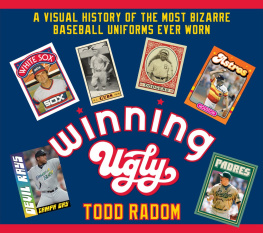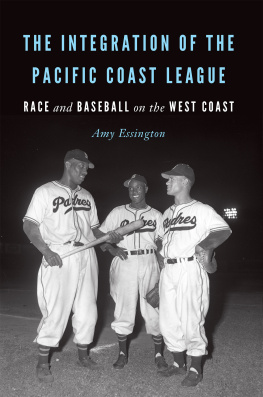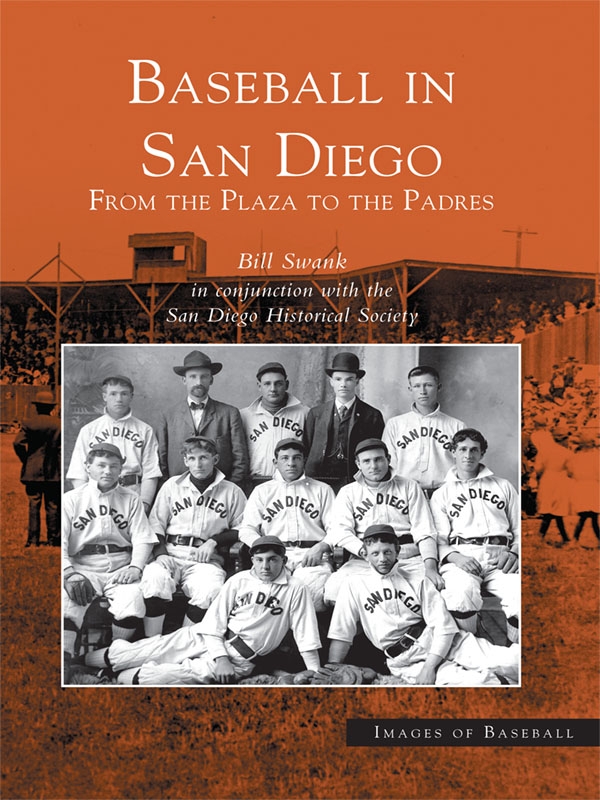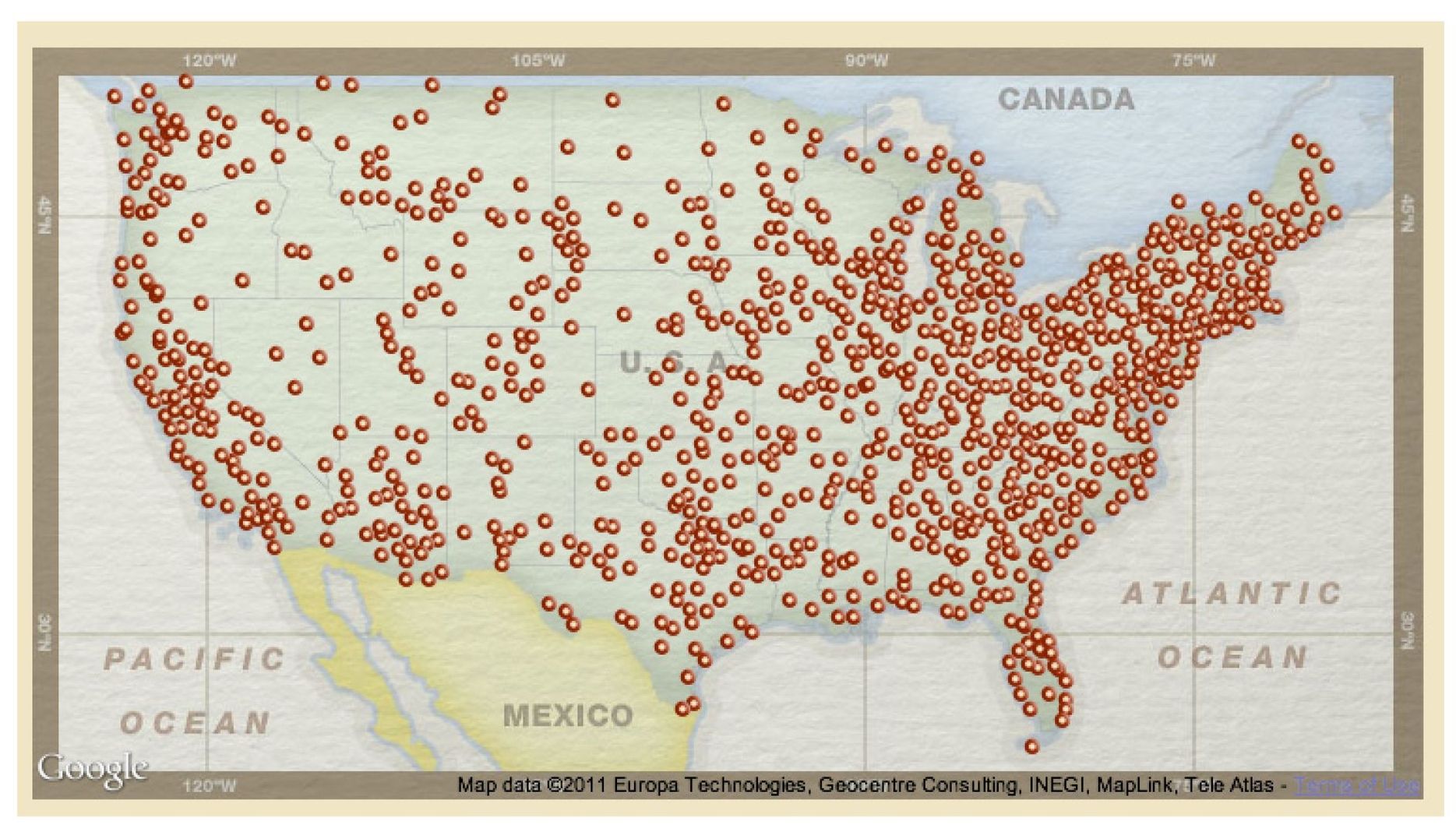ACKNOWLEDGMENTS
Special recognition is given the following work that served as road signs along the way: Always on Sunday by John Spalding, The California Winter League by William McNeil and Caver Conquest by Don King. Every San Diego sports fan should have Dons history of San Diego High School athletics on their bookshelf. Over twenty years ago, Frank Norris wrote a fine article about early San Diego baseball in The Journal of San Diego History . Prehistorian Angus Macfarlane has dug deep to find old base ball DNA in the Golden State. High fives to all of you.
Thanks goes to Roger Showley who waved good bye when I departed Horton Plaza in 1871. Dennis Sharp and Carol Myers were always available to provide assistance at the San Diego Historical Society. Though he didnt realize it, Dennis provided the most encouragement for this project. This has been a shared venture with the San Diego Historical Society. Tom Larwin graciously gave information about the original San Diego Bears and Pickwicks from the early 20th century. Finally, every author would want teammates like Arcadia editor Jeff Ruetsche, publisher John Pearson, and Sales Director Kate Everingham. They let me call my own game. The hits, the runs... the errorsthey are all mine. You cant do history on this scale without making a few errors. They are part of baseball and they are part of the publishing game, too.
The following people are also part of this book: Dick Adams, Don Anderson, Lenny Arevalo, Mel Atwell, Irene Ballwey, Helen Baros, Dick and Alice Bartley, Ernie Beck, George Bergmeister, Dick Beverage, Larry Beyersdorf, Bruce Binkowski, Lefty Blason, Ernie Bonn, Ray Brandes, Bob Breitbard, Terry Bertolino, Bill Burdick, Priscilla Burge, Ruby Caldwell, Billy Capps, Andy Castagnola, Bob Cluck, Rick Crawford, John Daly, Sara Davis, Eddie Deal, Rick Diaz, Dick Dobbins, Bob Dreher, John Drehner, Augie Escamilla, Bruce Ericcson, Dave Eskenazi, Ed Fletcher, Jeff Frank, King Freeman, Mick Gammon, Pete Grijalva, Charlie Grimm, Jack Hacker, Rusty Hansen, Brian Hartley, Larry and Tina Hernandez, Al and Pati Hogan, Jack Innis, Chris Jenkins, Emily Jenkins, Rua Johnson, Pat Jones, Stacy Jordan, Margaret Kazmer, Jane Kenealy, Autumn (Durst) and Bud Keltner, Frank Kern, Kevin Kernan, Al Kidd, Kirk Kinney, Bill Kinsella, Philip, Melville and Dave Klauber, Ann Knight, Tom Larwin, Fred Lewis, Ed Linn, Larry Littlefield, Sister Dominica LoBianco, Alan and Norman Lubke, Mark Macrae, Jerry Magee, Tom Maggard, Paul Maracin, Doc Mattei, Vonn Marie May, Walter McCoy, Johnny McDonald, Ginger McMillan, Ron Mikkelson, Chris Milnes, Pete Morrow, Derek Moses, Bob Moss, Joe Naiman, Kevin Nelson, Rich Nelson, Norma Nunez, Susan Painter, John Panter, Nelson Papucci, Fred Peltz, David Porter, Seymour Prell, Chuck Primeau, Heather Ray, Dion Rich, Herm Reich, Frank Rossman, Ed Sanclemente, Elizabeth Schlappi, Chris Schuehle, Jane Selvar, Cyndi Shatzer, Tom Sheridan, Bob Shumake, Steve Sloan, Bob Smith, Jim Smith, Rick Smith, Vern Smith, Bob Sterling, Muriel Strickland, Norm and Leuella Syler, Pete Tapia, Ron Taylor, Marie Templeton, Ralph Thompson, Todd Tobias, Chris Travers, Glenn Turgeon, Frank Valasco, Donna Van Ert, John Wadas, Traci Wagnon, Tad Wildrick, Max West, Gaylon White, Phil White, Carl Wickham, Dennis Wills, Skip Wills, and Earl Wilson, Sr. and Jr.
Dearest Sister,
I did not have time to write you a short letter, so I wrote a long one.
Blaise Pascal, French mathematician and philosopher
Note to Pascals sis:
Youll never know how tough it is to write a short book. Its a blivet!
Bill Swank, American science fair winner and baseball historian
Find more books like this at
www.imagesofamerica.com
Search for your hometown history, your old
stomping grounds, and even your favorite sports team.
ONE
A Gentleman Asks... 18701879
San Diego Population: 2,300
Weather: Sunny, 72 degrees
San Diegos first newspaper, the San Diego Herald , debuted on May 29, 1851. Sports coverage was sparse in those days. There was nothing to report. Billiards, bowling and boredom helped pass the time in the sleepy watering holes of Old San Diego. There were occasional rifle and pistol matches or exciting Indian sack races to mark the holidays. In 1856, an impromptu three and a half-mile race between a mule team and a pair of plugs ended in a thrilling three quarters of an inch victory for the nags. The mules would have won, but they were delayed for a half hour by the little doctor falling over the tail board of the wagon. Such trauma was commonplace in Southern California even before the advent of the automobile, freeway pileups and road rage. Otherwise, San Diego was a pretty laid back kind of place. Dullsville might have been a better description.
On September 7, 1870, a glimmer of hope finally appeared in the San Diego Union : BASE BALLA gentleman asks whether there is such an institution as a base ball club in San Diego. He thinks there are active young men enough here to put the thing through. We havent any club here now, but, as he says, there are men enough, and there is plenty of room.
Nothing happened.
Almost a year later, in May of 1871, a local merchant named Daniel Ullman announced efforts to organize a base ball club. Before teams could even be formed, 18 eager ballists met on the Sixth of May on the Plaza in New Town, which was located directly south of the newly constructed Horton House Hotel (the current downtown sites of Horton Plaza and the U.S. Grant Hotel). It was the first recorded game of base ball in San Diego. The results of this contest are lost to the ages, but base ball fever would infect the tiny border town.
The Union boldly predicted that in a short time, San Diego would compete credibly with the best clubs in California. Note was made of the citys fine climate that should make base ball a favorite game. To keep things in perspective, that same day, troops from the 1st Cavalry arrived from Fort Yuma and boarded a steamer bound for San Francisco after service against the Apaches in Arizona.
The newspaper boast was outrageous indeed. Base ball had already been played in the Golden State for over 20 years. Alexander Joy Cartwright, Jr., the father of modern base ball, has long been credited with introducing the sport to California in 1849. Supposedly in the brief span of five days during a San Francisco stopover while en route to Hawaii, he encountered a few 49ers who were more interested in playing in the outfield than in the gold fields. And, baseball was invented in Cooperstown, too.
Apparently it took 10 years before teams were officially organized to play the first recognized game of base ball in 1859. According to an article in an 1851 issue of Alta newspaper, A game of base ball was played upon the [San Francisco] Plaza yesterday afternoon by a number of the sporting gentlemen about town. According to baseball prehistorian Angus Macfarlane, it is quite possible that soldiers from the First New York Volunteers, scattered throughout San Francisco, Sonoma, Monterey, and Santa Barbara during the Mexican War, introduced the game to California as early as 1847.
The transcontinental railroad was completed in 1869, the same year the Cincinnati Red Stockings became base balls first professional team. To cover expenses, the Reds organized a coast-to-coast tour to take on all comers. Their undefeated year-long trek resulted in 57 victories. The Red Stockings played six games against San Francisco clubs and won them convincingly: 35-4, 58-4, 66-4, 54-5, 76-5, and 46-14. For those keeping score at home, that is a cumulative 335 to 36 rout. The Friscos had a long way to go to catch Cincinnati. It would still be another two years before the first game of base ball was even played in San Diego.



